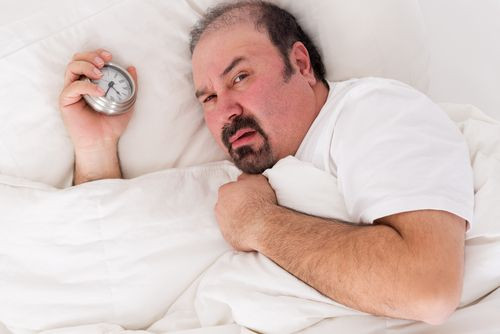Excessive Daytime Sleepiness Could Signal Sleep Apnea Among Obese; New Recommendations For Doctors

Doctors are now advised to send their patients suffering from unexplained daytime sleepiness, fatigue, insomnia, and snoring into the lab for overnight testing for a serious sleeping disorder that goes largely undiagnosed. Obstructive sleep apnea (OSA) rates have increased, causing the American College of Physicians to publish a new clinical practice guideline in the Annals of Internal Medicine.
"Obstructive sleep apnea is a serious health condition that is associated with cardiovascular disease, hypertension, cognitive impairment, and type 2 diabetes," Dr. David Fleming, the president of the American College of Physicians, said in a press release. "It is important to diagnose individuals with unexplained daytime sleepiness so that they can get the proper treatment."
The new guidelines will require doctors to recommend an in-house laboratory test if their patients have any symptoms of OSA, or a home-based monitor if they're unable to make it to a sleep center. A sleep study is performed on patients to monitor their muscle tone, leg movements, airflow, chest and abdominal movements, oxygen levels, brain waves and blood pressure. Patients sleep in a center monitored throughout the night with video cameras for eight to 12 hours depending how long they stay asleep. It’s a delicate process that involves almost two dozen electrodes, cross body belts, and the sometimes disconcerting knowledge of being watched while unconscious.
There are approximately 20 million Americans who are undiagnosed with OSA, one of the most common and detrimental sleep disorders today. People who have OSA stop breathing in their sleep five to 50 or more times every hour due to a collapse of soft tissue in the airway of their throat. OSA can be caused by a decrease of muscle tone in the neck, extra flesh in the airway, a large tongue, or excessive weight gain.
Those with sleep apnea aren’t completely oblivious to their body’s chronic choking, as they often experience the day-to-day side effects from losing at least a third of quality sleep. Symptoms of OSA include unintentional sleep episodes during wakefulness, daytime sleepiness, unrefreshing sleep, fatigue, insomnia, and snoring.
There are an estimated 12 to 18 million adults in the United States suffering from sleep apnea. The amount of people suffering from OSA is rising, particularly those who are 60 years or older because of the increased rates of obesity, which includes nearly 35 percent of the adult population in the U.S.
Education on the dangers of excessive weight gain is omnipresent in a society currently suffering from an obesity epidemic. According to the Journal of Clinical Sleep Medicine, weight gain is a risk for the initial development and the increase severity of OSA. However, because of its cyclical relationship and delay of diagnosis, it is difficult to determine which comes first, the unhealthy weight gain or the sleep disorder.
An airway blockage directly affects the airflow, which dictates the oxygen to blood ratio. OSA was discovered by a group of American pulmonologists in 1956 that identified patients who were both extremely obese and experiencing extreme daytime sleepiness. This came at a time when only 33 percent of the U.S. adults were overweight and 9.7 percent were obese, according to the United States Department of Agriculture, which is a comparatively low population when placed next to today’s staggering 35.7 percent obesity rate.
An apnea is a 90 percent reduction of airflow caused by the collapse of soft tissue in the back of the throat, which consequently blocks the airway and can last from a few seconds to minutes each time. The body struggles to push against the closed airway until the person comes out of deep sleep and into light enough sleep to regain muscle tone to reopen the airway. This can occur as often as 50 to 100 times per hour, which is a cycle of constant unconscious re-awakening throughout the night.
The idea of choking hundreds of times a night sounds like a form of torture. But the sleeper remains unaware to their night-disrupting condition, which is why many times a patient undergoes a sleep study because their spouse is worried or annoyed by the snoring suffocation.
"Diagnosing obstructive sleep apnea is high value care," Fleming said. "Prior to diagnosis, patients with obstructive sleep apnea have higher rates of health care use, more frequent and longer hospital stays, and greater health care costs than after diagnosis."
Source: Qaseem A, Dallas P, Owens DK, Starkey M, Holty JEC, and Shekelle P. Diagnosis of Obstructive Sleep Apnea in Adults: A Clinical Practice Guideline From the American College of Physicians. Annals of Internal Medicine. 2014.



























